4-NITROPHENYL-BETA-D-GLUCURONIDE
Synonym(s):p-Nitrophenyl-β-D-glucopyranosiduronic Acid;p-Nitrophenyl-β-D-glucuronide - CAS 10344-94-2 - Calbiochem;4-Nitrophenyl β-D-glucuronide;4-Nitrophenyl-β-D -glucopyranosiduronic acid;PNPG
- CAS NO.:10344-94-2
- Empirical Formula: C12H13NO9
- Molecular Weight: 315.23
- MDL number: MFCD00036210
- EINECS: 233-753-0
- SAFETY DATA SHEET (SDS)
- Update Date: 2025-01-27 09:38:02
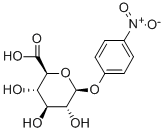
What is 4-NITROPHENYL-BETA-D-GLUCURONIDE?
Chemical properties
Crystalline Solid
The Uses of 4-NITROPHENYL-BETA-D-GLUCURONIDE
4-Nitrophenyl β-D-glucuronide has been used for determining the β-glucuronidase activity in urine samples, β-glucuronidase activity of bacteria in caecum content digesta and bovine liver. It has also been used to study the inhibitory effect of Phyllanthus amarus extracts on β-glucuronidase.
The Uses of 4-NITROPHENYL-BETA-D-GLUCURONIDE
4-Nitrophenyl β-D-glucuronide has been used as substrate in acetate buffer to measure β-glucuronidase.
What are the applications of Application
p-Nitrophenyl-β-D-glucuronide is a chromogenic substrate
Definition
ChEBI: A beta-D-glucosiduronic acid having a 4-nitrophenyl substituent at the anomeric position.
General Description
Chromogenic substrate for β-glucuronidase (Km = ~0.22 mM).
Properties of 4-NITROPHENYL-BETA-D-GLUCURONIDE
| Melting point: | 93°C |
| Boiling point: | 644.4±55.0 °C(Predicted) |
| Density | 1.731±0.06 g/cm3(Predicted) |
| storage temp. | -20°C |
| solubility | H2O: 0.1 g/mL, clear, faintly yellow |
| form | Liquid |
| pka | 2.69±0.70(Predicted) |
| color | Clear colorless to light yellow |
| optical activity | [α]20/D 102±3°, c = 1% in ethanol |
| Water Solubility | Water : 250 mg/mL (793.07 mM; Need ultrasonic) |
| BRN | 1438576 |
| CAS DataBase Reference | 10344-94-2(CAS DataBase Reference) |
Safety information for 4-NITROPHENYL-BETA-D-GLUCURONIDE
| Signal word | Warning |
| Pictogram(s) |
 Exclamation Mark Irritant GHS07 |
| GHS Hazard Statements |
H302:Acute toxicity,oral H315:Skin corrosion/irritation H319:Serious eye damage/eye irritation H335:Specific target organ toxicity, single exposure;Respiratory tract irritation |
| Precautionary Statement Codes |
P261:Avoid breathing dust/fume/gas/mist/vapours/spray. P305+P351+P338:IF IN EYES: Rinse cautiously with water for several minutes. Remove contact lenses, if present and easy to do. Continuerinsing. |
Computed Descriptors for 4-NITROPHENYL-BETA-D-GLUCURONIDE
| InChIKey | QSUILVWOWLUOEU-GOVZDWNOSA-N |
New Products
4-Piperidinemethanol Ethyl 2,4-Dihydroxy-6-methylnicotinate Ethyl isonicotinate 3-pyridine methanol N-Methyl 4-chloro-pyridine-2-carboxamide 2-Fluoro-6-iodobenzoic acid 2-((2,6-difluorobenzyl)(ethoxycarbonyl)amino)-4-((dimethylamino)methyl)-5-(4-nitrophenyl)thiophene-3-carboxylic acid Ethyl2-oxo-2,3,9,10-tetrahydro-1H-pyrido[3',4':4,5]pyrrolo[1,2,3-de]quinoxaline-8(7H)-carboxylate Elinzanetant tert-butyl 2-(4-amino-6-chloropyrimidin-5-yloxy)ethylmethylcarbamate Phenylazomalononitrile 5,6 Dimethoxy-1-indanone 3-Iodophenylacetic acid 2-Hexyn-1-ol Dibenzo-18-crown-6 2-Propanamine, 1-chloro-, hydrochloride (9CI) 3-Pyridineacetonitrile, α-hydroxy- 3-(hexyloxy)-4-(pyridin-3-yl)-1,2,5-thiadiazole N Ethylmethylamine Ethyl Methanesulfonate N N' DimethylEthylenediamine Lead II Bromide Variamine Blue B Diazonium salt N N N'Trimethyl ethylenediamineRelated products of tetrahydrofuran
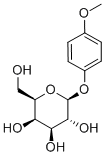


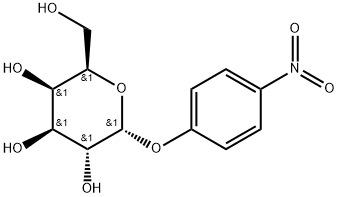
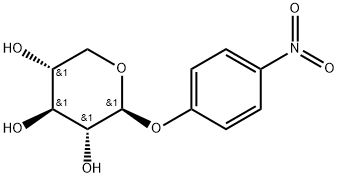
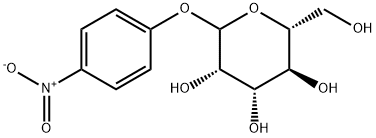


You may like
-
![4-Nitrophenyl β-D-Glucuronide [Substrate for β-Glucuronidase] CAS 10344-94-2](https://img.chemicalbook.in//Content/image/CP5.jpg) 4-Nitrophenyl β-D-Glucuronide [Substrate for β-Glucuronidase] CAS 10344-94-2View Details
4-Nitrophenyl β-D-Glucuronide [Substrate for β-Glucuronidase] CAS 10344-94-2View Details
10344-94-2 -
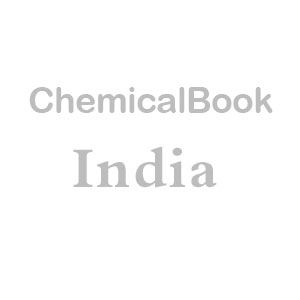 p-Nitrophenyl-ß-D-Glucuronide (PNPG (Gus)) extrapure CAS 10344-94-2View Details
p-Nitrophenyl-ß-D-Glucuronide (PNPG (Gus)) extrapure CAS 10344-94-2View Details
10344-94-2 -
 4-Nitrophenyl β-D-glucuronide CAS 10344-94-2View Details
4-Nitrophenyl β-D-glucuronide CAS 10344-94-2View Details
10344-94-2 -
 4-Nitrophenyl β-D-glucuronide CAS 10344-94-2View Details
4-Nitrophenyl β-D-glucuronide CAS 10344-94-2View Details
10344-94-2 -
 p-Nitrophenyl-β-D-glucuronide CAS 10344-94-2View Details
p-Nitrophenyl-β-D-glucuronide CAS 10344-94-2View Details
10344-94-2 -
 5162-90-3 2-Amino-3-(1,2-dihydro-2-oxoquinoline-4-yl)propanoic acid 97%View Details
5162-90-3 2-Amino-3-(1,2-dihydro-2-oxoquinoline-4-yl)propanoic acid 97%View Details
5162-90-3 -
 4-(4-Chlorobenzyl)-2-(1-methylazepan-4-yl)phthalazin-1(2H)-one hydrochloride 98 %View Details
4-(4-Chlorobenzyl)-2-(1-methylazepan-4-yl)phthalazin-1(2H)-one hydrochloride 98 %View Details
79307-93-0 -
 (R)-2-amino-N-benzyl-3-methoxypropanamide 98%View Details
(R)-2-amino-N-benzyl-3-methoxypropanamide 98%View Details
196601-69-1
Statement: All products displayed on this website are only used for non medical purposes such as industrial applications or scientific research, and cannot be used for clinical diagnosis or treatment of humans or animals. They are not medicinal or edible.
